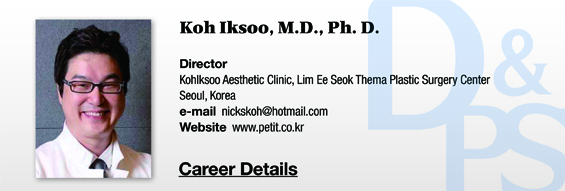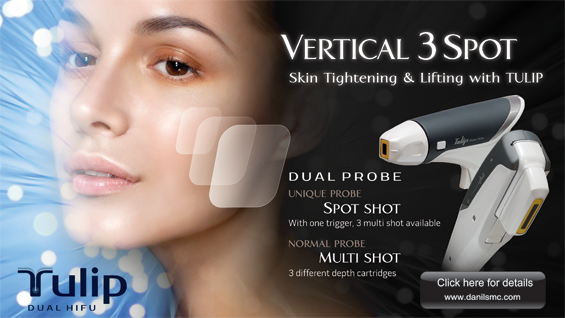Dr. Koh Iksoo is a plastic surgeon and a leading expert in fillers. He is the president of APAS (Association of Petit Aesthetic Surgery) and runs various academic seminars. Lately, he is also gaining renown in China and Japan. In this new series, D&PS will run three articles sharing Dr. Koh’s expert opinions on fillers. This series will provide a sweeping view of today’s filler market as well as deeper insights on the procedure. Continued from the last article ‘The Latest Trends in Fillers,’ this article will discuss evaluation of fillers based on his clinical experience.
Evaluation of fillers in clinical practice
I think safety is the most important criteria when it comes to evaluating fillers. In this article, I will evaluate currently available filler products with focus on safety.
Various low-price Korean filler products claiming high efficacy have become available. Users tend to be skeptical about new products as they believe new products have insufficient clinical evidence. Such prejudice interferes with accurate evaluation of fillers. One should have an open mind toward newer filler products and apply them in clinical practice before making an uninformed judgment.
I have established personal principles for objective and rational assessment in a clinical trial on dermal fillers. First, I only participate in trials that involve real patients enrolled outside my practice or patients enrolled by the manufacturer who will provide the treatment for free. Objective assessment is difficult when the trial enrolls patients only from my practice. Patients who pay for the treatment have high expectations and are indisposed to objective feedback.
Moreover, I include both positive and negative feedback in evaluation of clinical outcome. I believe that clarifying the best indication as well as areas of contraindication helps improve the quality of the product. Lastly, I try to set the follow-up period as long as possible to evaluate the effect of fillers that remain in the human body for a long time.
[Advertisement] Tulip(Skin Tightening & Lifting) – Manufacturer: DANIL SMC(www.danilsmc.com)
Classification of fillers
Fillers are classified based on their hardness as the degree of hardness determines the use and application. For example, Restylane (Galderma) has several product lines with different degrees of hardness such as Restylane Vital and Restylane SubQ, etc.
Soft fillers have different injection method, and post-injection treatment, etc. making the correct knowledge of product characteristics essential for optimal efficacy. Differences between hard and soft fillers are as following.
Hard fillers: Hard fillers are more difficult to inject. As the hard filler is not smoothly injected or easily positioned in the correct place, additional post-injection shaping is needed. However, it has the advantage of longer lasting effect.
Soft fillers: Soft fillers have better injectability and positioning. For example, in rhinoplasty, the filler can easily be guided into a desired shape. On the other hand, the effect is short-lived and it swells up 20-50% of the original volume by absorbing water in the human body. In other words, soft fillers are better for enhancing volume without precision injection. These products include Restylane, Juvederm, Juvederm Ultra XC (Allergan), and Stylage M (Chong Kun Dang Pharmaceutical Corp.), etc.
Correct selection of hard and soft fillers can reduce side effects and maximize effect. I recommend using a hard filler for creating the desired shape and using a soft filler for making touch-up. The forehead and cheek areas, where shaping as well as volumizing are needed, benefit the most from medium hardness fillers. For nasolabial lines, create the base with a hard filler and complete volumization with a soft filler. The soft filler absorbs water and enhances volume gradually after treatment.
Here, it is imperative to thoroughly check in advance the safety and side effects of the fillers to be used. Hard fillers have higher content of cross-linking agent to increase the hardness. That is, the HA content is abnormally high in harder fillers. With inappropriate processing technology, the cross-linking agent works as a toxin. When one of the bonds of the crosslink is broken, the agent interacts with surrounding tissues. Repeated tissue response triggered in this way develops into serious granuloma. Varioderm and Hyacorp, a German filler product, caused a high incidence of granuloma. I first thought these fillers were very effective as they remained in the body for over 2 years. However, bumps appeared and I realized that the high content of crosslinking agent used for increasing hardness led to tissue response. These filler products were withdrawn from the Korean market. As hard fillers remain in the body for longer periods of time, long-term follow-up is necessary.
The real concern is that less experienced doctors may not be forewarned of these side effects as the fillers that trigger tissue response were approved by the Ministry of Food and Drug Safety of Korea. For these reasons, an alert system for major side effects of fillers should be put in place. I will discuss about this alert system in greater detail at another occasion.
-To be continued-





















